
The Pure Water Occasional for August October 31, 2016
In this Halloween Occasional, you'll read about Blue Baby Syndrome, Native American water protectors, boil water advisories, boil water notices, the world's deepest underwater cave, and a high scoring water polo match. Nitrates, PFOAs, acetic acid, well contamination by horse manure, flooding caused by hurricanes, and PFG contamination in Colorado caused by the Air Force. You'll learn that water reservoirs cause greenhouse gases, which countries top the list as water consumers, how to reduce chlorine and chloramines and how to lower pH of alkaline water. You'll hear about the Staten Island siphon, a one million gallon water leak, a strange case of attempted murder by chlorinated water, Andrew Young's views on "Fluoridegate," the role of clinoptilolite in water treatment, and see a stunning US river basin map. And, as always, there is much, much more.
The Pure Water Occasional is a project of Pure Water Products and the Pure Water Gazette.
To read this issue on the Pure Water Gazette's website, please go here. (Recommended! When you read online you get the added advantage of the Gazette's sidebar feed of the very latest world water news.)

Nitrates in drinking water are becoming a growing concern
Adapted from the Des Moines Register.
As nitrate levels in the water of Iowa's cities continue to climb, many are beginning to question the safety the 10 ppm federal allowable for nitrates in drinking water.
State sources in Iowa say that the water supplies of about 260 cities and towns are now highly susceptible of becoming contaminated by nitrates and pollutants — about 30 percent of Iowa's 880 municipal water systems. The state data centers on the cities reporting nitrate levels of 5 milligrams per liter or higher, a warning sign that nitrates are approaching harmful levels.
While it it true that cases of "Blue Baby Syndrome," the health issue most often associated with nitrates in drinking water at 10 ppm or higher, are quite low, there is growing evidence that lower levels of nitrates can be linked to a host of ailments, not in babies but in the general population.
For example, the Des Moines Register, lists:
- Birth defects: Studies conducted in Iowa, Texas, Canada and Australia found statistically significant links between elevated nitrate in drinking water and neural tube defects of the brain and spinal cord, including spina bifida, some oral cleft defects and limb deficiencies.
- Bladder cancer: Researchers who followed a large group of post-menopausal women in Iowa over many years found an increased risk for bladder cancer as nitrate concentration in water supplies increased. Other likely influences, including exposure to nitrate and nitrite through dietary and other sources, also were considered. Studies in Spain, Germany and Taiwan reported similar findings.
- Thyroid cancer: One of the most rapidly increasing cancers in the United States, thyroid cancer, also has been associated with extended exposure to high nitrate levels in drinking water in two large U.S. studies.
Nitrates get into water mainly from agricultural runoff from fertilizers and animal feed lots. It is very costly for municipal water suppliers to remove nitrates. For homeowners, an undersink reverse osmosis unit takes care of nitrates easily.
Reference: Des Moines Register.
How is tap water treated, and what causes a boil-water advisory?
There's nothing like a storm to make you appreciate tap water.
by Chanie Kirschner
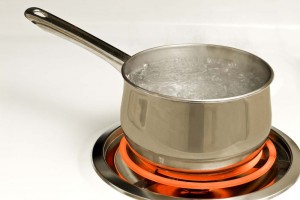
Gazette editorial note: There's nothing like owning an ultraviolet unit to make you appreciate being able to ignore boil-water advisories.
In the wake of hurricanes and resulting power outages, many times people are told their tap water is non-drinkable.
Water providers often issue a “boil-water advisory” because a treatment facility was affected during a storm. Residents are typically told that water is safe for bathing and laundering clothes. But even though the water that comes out of the faucet looks the same as it always does, something obviously happened to make it no longer potable, or safe to drink.
So what exactly occurred? And what does the water treatment facility do to the water in the tap in first place?
Most municipal water treatment plants work by taking surface water, like water that comes from streams or lakes, and putting it through the treatment ringer , with processes like coagulation, filtration, sedimentation and disinfection. All of these processes help to eliminate contaminants in the water, like shigella, E. coli and cryptosporidium.
If a water treatment facility is flooded, as it could be during a hurricane , it is possible that the entire treatment facility’s integrity could be compromised, since the system can handle only a certain amount of nontreated water at a time. Other common situations that could compromise a facility include loss of pressure in the water distribution system, loss of disinfection, water line breaks and power outages. This could lead to your water provider issuing a boil water advisory, meaning you should boil any water that you intend to consume, whether it be for drinking, cleaning food or even brushing your teeth. In many cases, since these bacteria and viruses are not visible to the naked eye, the water will look the same as it always does.
The water is safe for bathing (so long as you don’t swallow the water) and laundering clothes because these bacteria can cause harm to your body only if they are swallowed. If you have toddlers or babies in the house, it’s important to give them only a quick rinse at the sink or a sponge bath rather than a regular bath during a boil water advisory since they can very easily swallow bathwater.
So how do you know when the water is safe to drink again? Usually, the water company will issue an alert when the boil water advisory has been lifted, but be aware that this doesn’t always happen so quickly. (And also note that a boil water advisory , when drinking water may be contaminated, is different from a boil water notice , which means that the contaminants have definitely been found in the water.)
One thing is for sure, though. Something like this really makes you appreciate the creature comforts we’ve gotten used to — being able to turn on the faucet and brush our teeth, rinse a pot of spaghetti, and fill up a pitcher of cold water to drink.
Source: Mother Nature Network.
Water News
Now, link free for your reading pleasure.

Police from five states were brought in to protect pipeline interests from this radical water protectors group sitting in a prayer circle in protest of the Dakota Access Pipeline.
A Texas state legislator is proposing a vast underground water storage system that would keep the state in water during a drought of up to seven years.
Louisville gets its drinking water from the Ohio River. It is currently finding about 20 ppt of PFOA, or C8 (Teflon), in its water. The recently established EPA health advisory level for PFOA is 70 parts per trillion.
f
The title of world's deepest underwater cave now belongs to the Hranice Abyss in the Czech Republic. An expedition team led by Polish explorer Krzysztof Starnawski used a custom-designed underwater vehicle to descend to a record-breaking 1,325 feet into the murky depths.
Another leak of radioactive water occurred at the the crippled Fukushima No. 1 nuclear plant.
The US Air Force is drilling 18 test wells in an attempt to determine how perfluorinated compounds, or PFCs, contained in firefighting foam, is contaminating water south of Colorado Springs. PFCs, which have been linked to prostate, kidney and testicular cancer, were found earlier this year in water systems serving about 69,000 people in Fountain, Security and Widefield. Subsequent story: Air Force officials now admit that the base near Colorado Springs sent water laced with toxic firefighting foam into the city's sewer system as often as three times a year.

Hurricane Matthew brought unprecedented flooding. Princeville NC, shown above, was underwater days after the torrential rains ceased.
A horse track in Scarborough, Maine is closing its barn because of horse manure contamination that is seeping into groundwater.
The Gannon men's water polo team snapped a 19-19 deadlock with three unanswered goals during the final 69 seconds to win a 22-19 exhibition shoot-out against Mount San Antonio.
Weeks after the hurricane, clean water is still not available to thousands of Haitians.
Recent studies have revealed the unexpected truth that the world's water storage reservoirs are major producers of greenhouse gas, accounting for 1.3 percent of the world's greenhouse gases—as much as the entire country of Canada. Reservoirs are big producers of methane in particular, which is 34 times more potent than carbon dioxide in environmental degradation.

This map, made by Imgurian Fejetlenfej, shows all the different river basins around US. The Mississippi River basin, shown in pink, takes up most of the map.
A UNESCO-related organization released a list of the world's top ten annual water consuming countries. And the winners are:
- China: 1.5 billion people, 362 trillion gal
- U.S.: 300 million people, 216 trillion gal
- Brazil: 175 million people, 95 trillion gal
- Russia: 143 million people, 71 trillion gal
- Mexico: 100 million people, 53 trillion gal
- India: 1.1 billion people, 30 trillion gal
- England: 60 million people, 20 trillion gal
- France: 60 million people, 20 trillion gal
- Canada: 33 million people, 19 trillion gal
- Australia: 20 million people, 12 trillion gal
Over one million gallons of water were lost when a 24” water main broke in Middletown, CT. “To give perspective, the average in-ground swimming pool holds 7,000 gallons—so losing 1 million gallons is like losing the water in 142 in-ground pools in an hour.”
A Pennsylvania university student accused of putting bleach in his pregnant girlfriend's drinking water in an attempt to harm her fetus has been charged with attempted murder and held on $1,000,000 bond.
A $250 million drinking water tunnel, called a siphon, from Brooklyn to Staten Island has been activated. The tunnel will be capable of delivering up to 150 million gallons of water per day to Staten Island.
In the city of Groves (TX) tests found lead in the water of 25% of the homes tested. City authorities blame the high lead findings on solder in the pipes of the homes themselves.
Andrew Young Views Fluoridation of Water as a Civil Rights Issue
Civil rights pioneer, former mayor of Atlanta, and former U.S. Ambassador to the United Nations Andrew Young has sent a letter to the governor of Georgia calling for hearings to investigate why water fluoridation is continuing despite numerous reasons for ending the practice.
“This is a civil rights issue,” Young says, “and the people have a right to have the full story given to them, rather than highly edited, misleading talking points.”
The letter was also sent to American Water Works Association CEO David LaFrance.
For decades, most messaging about fluoridation has focused on the goal of cavity prevention, with little discussion about fluoride risks to tissues outside the mouth. Young points out that the story offered by promotors of fluoridation has changed over the years. “When someone’s story keeps changing, there are quite often motivations behind their changed stance that may not be aligned with the best interests of the public," he says. “Are we sacrificing the health and safety of our communities simply because dentists don’t want to be embarrassed, or sued?”
Dental industry influence and control over the messaging points about fluoridation received by the public and officials is one of a number of issues surfacing in the public health scandal that many are now referring to as Fluoridegate.
Another issue is that adding fluoride chemicals to drinking water is a practice fraught with uncertainty, as there is no way to monitor or control the dose of fluorides individuals will receive, including kidney patients, diabetics, thyroid patients, persons in low income and minority communities, and workers in certain professions.
Those who consume large amounts of water because of outdoor work in hot environments, Young says, are especially at risk. Outdoor workers are a "susceptible subpopulation," who may be especially at risk for fractures because of bone deterioration brought on by excessive fluoride consumption.
The uncontrolled dosing and selective messaging of points about fluoridation are not lost on attorneys arming themselves for a number of types of fluoride harm litigation.
“Fluoridated water presents a very wide array of legal problems on the personal injury side, and of course there are civil rights, consumer protection, employee injury and right-to-know aspects also,” says attorney Chris Nidel.
“Fluoridegate hearings and upcoming legal cases will put people under oath about all this.”
Influential public figures such as Erin Brockovich, Dr. Mark Hyman, Alveda King and other leaders are also calling for Fluoridegate hearings. Dr. Hyman is a nine-time New York Times bestselling author.
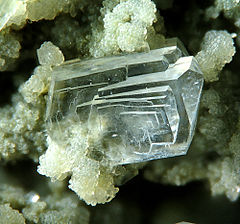
Natural Zeolite Media for Fine Sediment Filtration
Clinoptilolite
For many years the standard granular media used to reduce sediment were "multi media" combinations featuring such ingredients as garnet, anthracite, and sand. These mixed bed filters usually resulted in filtration down to 10 to 15 microns.
More recently, high purity zeolite has become the medium of choice for sediment filtration. Modern zeolite filters achieve a 5µ nominal rating, with a couple of brands claiming to be even tighter.
There are some 40 known types of natural zeolites. The most common is clinoptilolite.
To continue this article, go to the Pure Water Gazette website.
Chlorine and Chloramine Reduction
How flow rate affects media longevity and pressure drop
by Gene Franks
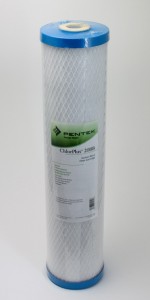
I'm going to make some generalizations about water treatment that are based on information from a single advertising brochure: Pentair's ChlorPlus Series information sheet. The sheet gives performance data for two Pentair cartridge series, the ChlorPlus carbon block filters in four standard sizes and the unique CRFC radial flow carbon series in two high-flow sizes.
Here is some basic information you deduce from the Pentair sheet:
Carbon reduces both chloramine and chlorine.
Although specialty carbons are often used to enhance chloramine reduction, any carbon filter will remove chloramine if you give it enough contact time. This is contrary to information supplied by some anti-chloramine groups which would have it that chloramine is "impossible" to remove. And, in answer to another frequent question, filters that remove chloramine also remove chlorine.
Carbon lasts much longer when treating chlorine than it does when treating chloramine.
The ChlorPlus 10 (9.75" x 2.5" drinking water size) is rated for 50,000 gallons at 1 gallon per minute (gpm) when treating chlorine and only 1,000 when treating chloramine at the same flow rate. This fifty to one ratio is typical.
Performance and longevity vary considerably according to flow rate.
The CRFC20-BB "whole house" 4.5" X 20" cartridge has a chloramine capacity of 25,000 gallons when treating a flow stream of 2.5 gpm and only 10,000 gallons when the flow rate doubles to 5 gpm. This has interesting implications if you're buying a whole house filter. Consider what happens if you need to treat five gallons per minute and you use two filters and split the stream between them. When compared with the single filter, the two-filter system doesn't treat twice as many gallons; it treats five times as many gallons. At 5 gpm, one filter has a 10,000 gallon service life, but two filters at the same flow rate have a 50,000 gallon life expectancy.
Pressure drop across a filter increases greatly as flow rates increase.
The CRFC20-BB reduces water pressure by 2.5 psi at a 5 gpm flow rate and less than 1 gpm when flowing at 2.5 gpm. The faster the flow, the greater the pressure drop: another excellent reason to split your whole house service stream between two filters installed in parallel.
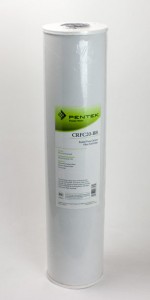
The principles above apply not only to Pentair cartridges and not only to chloramine and chlorine reduction. For large, tank-style filters with granular carbon, for example, you'll get much longer service life and less pressure drop if the unit is adequately sized. A carbon backwashing filter designed to handle a 4 gallon per minute flow will "work" if you run six or seven gpm through it, but the carbon with need replacement much sooner and you'll experience greater pressure drop than you would with a filter designed to handle 6 gpm comfortably.
For more information with pictures of parallel installations with cartridge filters, see "Multi-filter installations provide better flow, better water."
Lowering the pH of Water in the Home
by Gene Franks
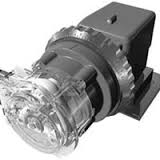
Stenner Peristaltic Pump
High pH in home water is treated far less frequently than low pH. In general, there are few negatives to high pH, but it can produce a soda taste and even cause corrosion in piping and fixtures made with metals such as brass, copper, zinc, aluminum and iron. Very high pH can also cause chlorination to be ineffective.
High pH can be reduced with specialized ion exchange media, but the most common treatment is to inject a mild acid into the water line. It is normally a "point-of-entry" treatment.
With wells, the normal place to inject the acid is just before the pressure tank.
To inject you need a chemical feed pump made of materials that resist corrosion (plastic, in other words) and a solution tank to hold the acid. The most commonly used acid for pH reduction is acetic acid, which is plain old supermarket grade white vinegar. It is safe, effective, economical, and readily available. Acetic acid is usually injected in about a five percent solution. Other popular weak acids available to residential users are citric acid, a bit stronger than vinegar, which is fed in a one percent solution, sodium bisulfate (potable water grade), fed at one percent, and alum, fed in a two-percent solution.
Hydrochloric and sulfuric acids are usually used only with industrial applications and in cases where alkalinity is extremely high.
As with most treatments in which a solution is fed into a water line, pH reduction will involve some trial and error. I suggest that you start with the solution strengths given above, set your pump at its medium setting, and give it a try. Check the pH downstream of the feed (but before any water treatment equipment) after a couple of days and adjust your solution strength or pump setting as needed.

Please visit our RO Parts Page for tanks and accessories. We also have dedicated parts pages for countertop water filters, undersink filters, and aeration equipment. We stock parts for everything we sell.
Thank you for reading. Please come back next week.
Places to Visit on Our Websites:
Garden Hose Filters. Don’t be the last on your block to own one. And don't forget that National Garden Hose Day is always less than a year away.
Model 77: “The World’s Greatest $77 Water Filter”
”Sprite Shower Filters: You’ll Sing Better!”
Write to the Gazette or the Occasional: pwp@purewaterproducts.com
Please Visit
The Pure Water Gazette – now with an up-to-the-minute feed of the latest water news.
